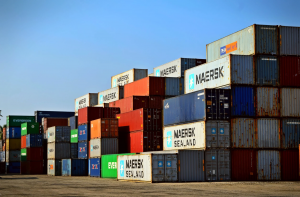 When it comes to reducing your company’s carbon footprint, it’s not enough to recycle paper in the office or even use sustainable packaging to ship your products.
When it comes to reducing your company’s carbon footprint, it’s not enough to recycle paper in the office or even use sustainable packaging to ship your products.
Under the Greenhouse Gas (GHG) Protocol, corporate emissions are divided into three types, or Scopes 1, 2, and 3. Scope 1 emissions are created directly by your company in the course of doing business – they’re the emissions from your delivery truck, for example. Scope 2 emissions are not directly created by your company, but are created during the production of any energy resources your company buys, including heat, electricity, and steam. Scope 3 emissions are created by your supply chain, your distribution network, and the use of your purchased products.
Scope 3 emissions are by far the biggest part of any company’s carbon emissions. Your supply chain is responsible for more than 80 percent of your company’s carbon emissions. Shrinking that carbon footprint is a matter of taking control of your supply chain to a greater extent than ever before. You need to be more careful about what suppliers you choose and where they are. Minimize your use of fossil fuels for transportation of materials, supplies, and finished products. Simplify supply chain processes, and minimize overproduction to control waste.
Simplify Processes
It can be easy to fall into the trap of thinking of supply chain changes as large and sweeping. But small changes can also have a large impact on the entire supply chain. You should always be working toward simplifying and streamlining your supply chain processes. Whenever you manage to improve quality, hasten delivery, or reduce waste, you’ll make a small change that will add up to big improvements in your supply chain’s overall sustainability.
Bring Suppliers Closer
It’s tempting to cut costs by sourcing supplies from the cheapest supplier, even if that supplier is on the other side of the world. But the further your materials have to travel to reach you, the bigger your supply chain’s carbon footprint. You can significantly reduce your Scope 3 emissions simply by bringing suppliers closer to your factories.
When suppliers are local, you’ll be doing more than stimulating the local economy. You’ll be cutting down on transport time for materials and drastically reducing the amount of fossil fuels needed to ship them. You can also keep a closer eye on your suppliers and make sure that they, too, are making environmentally sustainable choices in their own supply chains.
You need a level of visibility into your suppliers and their sourcing that gets much easier when the suppliers in question are local. You need to know how your suppliers extract or produce the raw materials they sell to you, so you can be sure they’re being produced in ethical and sustainable ways. You need to monitor suppliers’ working conditions and the environmental impact of their Scope 1 and 2 emissions.
easier when the suppliers in question are local. You need to know how your suppliers extract or produce the raw materials they sell to you, so you can be sure they’re being produced in ethical and sustainable ways. You need to monitor suppliers’ working conditions and the environmental impact of their Scope 1 and 2 emissions.
Optimize Shipping and Distribution to Offset Fossil Fuel Use
Getting supplies and materials shipped to you from suppliers is a big source of Scope 3 emissions, but so is shipping your finished products through your distribution networks. You need to take care to offset fossil fuel use on both ends.
For example, you could have supplies and materials shipped to you using transportation methods that use fossil fuels more sustainably, like rail or ocean freight instead of trucks and planes. Simple things, like taking care to fill up trucks and shipping containers, or installing speed limiters on trucks used for shipping, can go a long way towards reducing your company’s carbon footprint.
Control Overproduction
Overproduction leaves products sitting in warehouses unsold and is a key driver of waste in the supply chain. You need an accurate picture of the demand for your products so you can avoid overproduction. Most supply-to-pay automation systems include machine learning, AI, and predictive analytics tools that can help you more accurately gauge demand for your products so you can minimize waste due to overproduction by manufacturing the exact correct amount of product to meet demand.
Supply chain sustainability is the watchword of the day as companies around the world seek to reduce their carbon emissions. Supply chains create the vast majority of corporate carbon emissions, as goods are shipped all around the globe. Shorten your supply chains and take steps to reign in supply chain-related carbon emissions, so you can meet your corporate goals for sustainability and appeal to a consumer class that prioritizes environmental stability. Your reward will be higher profits and stronger loyalty from your customer base.





